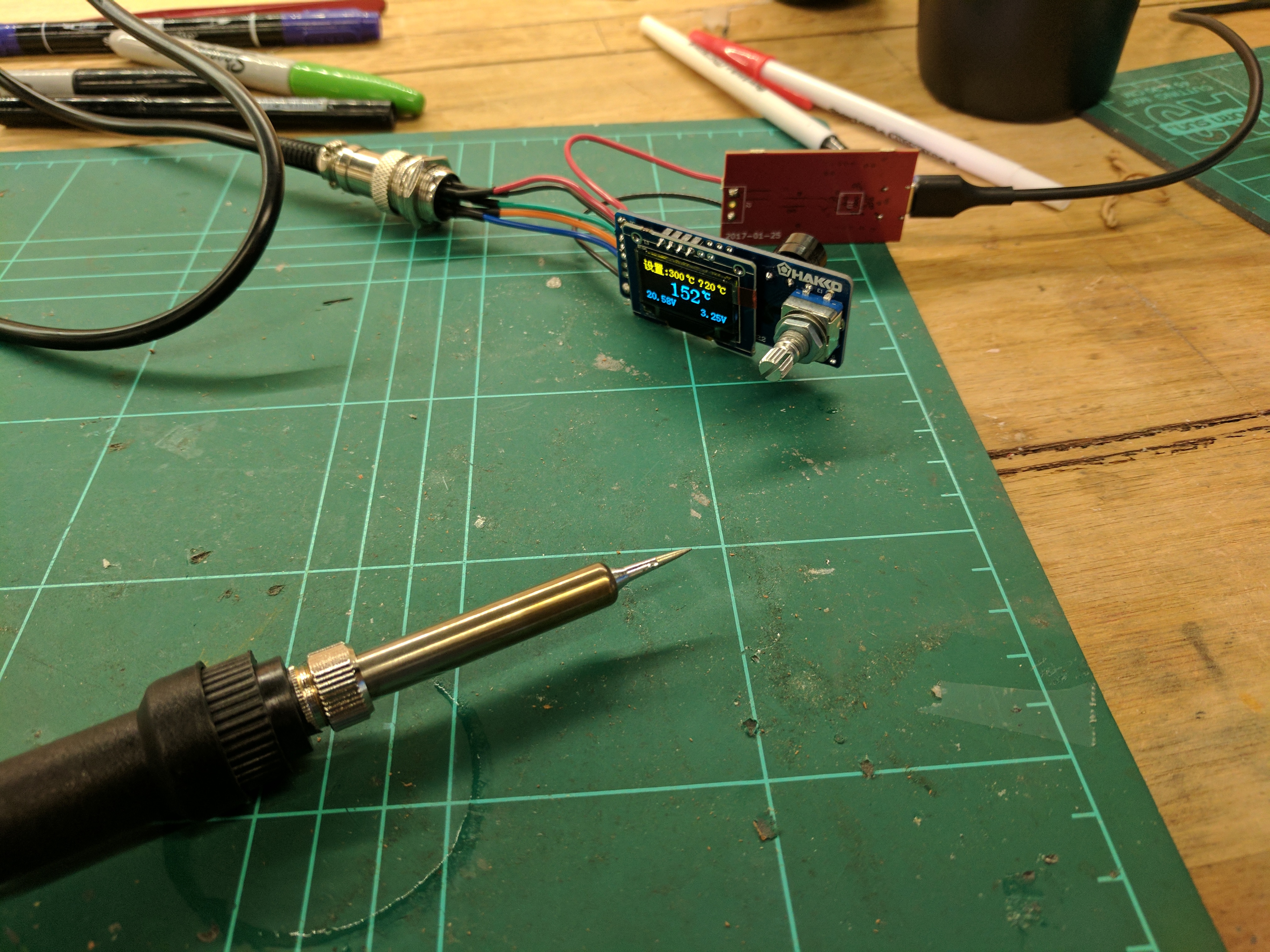Making a USB powered soldering iron that doesn't suck
Today's evil project was inspired by a suggestion after my talk on USB-C & USB-PD at this years's linux.conf.au Open Hardware miniconf.
Using a knock-off Hakko driver and handpiece I've created what may be the first USB powered soldering iron that doesn't suck (ok, it's not a great iron, but at least it has sufficient power to be usable).
Building this was actually trivial, I just wired the 20v output of one of my USB-C ThinkPad boards to a generic Hakko driver board, the loss of power from using 20v not 24v is noticeable, but for small work this would be fine (I solder in either the work lab or my home lab, where both have very nice soldering stations so I don't actually expect to ever use this).
If you were to turn this into a real product you could in fact do much better, by doing both power negotiation and temperature control in a single micro, the driver could instead be switched to a boost converter instead of just a FET, and by controlling the output voltage control the power draw, and simply disable the regulator to turn off the heater. By chance, the heater resistance of the Hakko 907 clone handpieces is such that combined with USB-PD power rules you'd always be boost converting, never needing to reduce voltage.
With such a driver you could run this from anything starting with a 5v USB-C phone charger or battery (15W for the nicer ones), 9v at up to 3A off some laptops (for ~25W), or all the way to 20V@5A for those who need an extremely high-power iron. 60W, which happens to be the standard power level of many good irons (such as the Hakko FX-888D) is also at 20v@3A a common limit for chargers (and also many cables, only fixed cables, or those specially marked with an ID chip can go all the way to 5A). As higher power USB-C batteries start becoming available for laptops this becomes a real option for on-the-go use.
Here's a photo of it running from a Chromebook Pixel charger:

Using a knock-off Hakko driver and handpiece I've created what may be the first USB powered soldering iron that doesn't suck (ok, it's not a great iron, but at least it has sufficient power to be usable).
Building this was actually trivial, I just wired the 20v output of one of my USB-C ThinkPad boards to a generic Hakko driver board, the loss of power from using 20v not 24v is noticeable, but for small work this would be fine (I solder in either the work lab or my home lab, where both have very nice soldering stations so I don't actually expect to ever use this).
If you were to turn this into a real product you could in fact do much better, by doing both power negotiation and temperature control in a single micro, the driver could instead be switched to a boost converter instead of just a FET, and by controlling the output voltage control the power draw, and simply disable the regulator to turn off the heater. By chance, the heater resistance of the Hakko 907 clone handpieces is such that combined with USB-PD power rules you'd always be boost converting, never needing to reduce voltage.
With such a driver you could run this from anything starting with a 5v USB-C phone charger or battery (15W for the nicer ones), 9v at up to 3A off some laptops (for ~25W), or all the way to 20V@5A for those who need an extremely high-power iron. 60W, which happens to be the standard power level of many good irons (such as the Hakko FX-888D) is also at 20v@3A a common limit for chargers (and also many cables, only fixed cables, or those specially marked with an ID chip can go all the way to 5A). As higher power USB-C batteries start becoming available for laptops this becomes a real option for on-the-go use.
Here's a photo of it running from a Chromebook Pixel charger:
